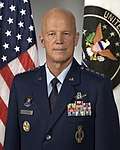United States Space Command
United States Space Command (USSPACECOM or SPACECOM) is a unified combatant command of the United States Department of Defense, responsible for military operations in outer space, specifically all operations above 100 kilometers above mean sea level.
| United States Space Command | |
|---|---|
 Seal of United States Space Command | |
| Active | 29 August 2019 – present (11 months, second U.S. Space Command)
23 September 1985 – 1 October 2002 (16 years, 10 months, first U.S. Space Command)[1] |
| Country | |
| Type | Unified combatant command |
| Role | Space warfare |
| Part of | |
| Headquarters | Peterson AFB, Colorado, U.S.[2] |
| Website | www |
| Commanders | |
| Commander | |
| Deputy Commander | |
| Chief of Staff | |
| Command Senior Enlisted Leader | CMSgt Roger A. Towberman, USSF |
| Insignia | |
| Army Element Shoulder Sleeve Insignia | 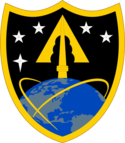 |
| Army Element Distinctive Unit Insignia |  |
| Part of a series on the |
| Space policy of the United States |
|---|
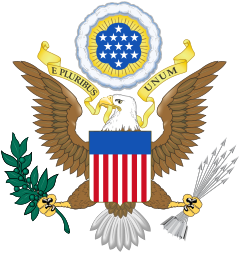 |
|
Human spaceflight programs
|
|
Robotic spaceflight programs
|
Space Command was created in September 1985 to provide joint command and control for all military forces in outer space and coordinate with the other combatant commands. SPACECOM was inactivated in 2002, and its responsibilities and forces were merged into United States Strategic Command.[4] After nearly 17 years, Space Command was reestablished on 29 August 2019, with a reemphasized focus on space as a warfighting domain.
Mission
Space Command's mission is to: "To conduct operations in, from, and through space to deter conflict, and if necessary, defeat aggression, deliver space combat power for the Joint/Combined force, and defend U.S. vital interests with allies and partners." [2]
Organization
United States Space Command has two subordinate components. The Combined Force Space Component Command is responsible for planning and conducting global space operations, while also providing space effects to the other combatant commands and U.S. allied partners. Joint Task Force–Space Defense is responsible for conducing space superiority operations.[2]
Structure
![]()
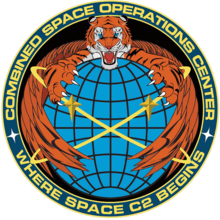
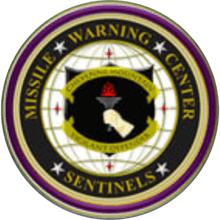


![]()
Service components
As a unified combatant command, Space Command has a number of service components that provide forces to it.[5]

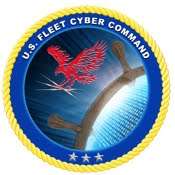
- Space Operations Command (Space Force component)

History
First U.S. Space Command: 1985–2002

United States Space Command was established in as a functional combatant command 1985 to provide joint command and control of the Air Force, Army, and Navy's space forces, as well as prepare for the implementation of the Strategic Defense Initiative.[9][10]
In the aftermath of the September 11 attacks, the armed forces' focus on homeland defense and counter-terrorism was significantly increased, which resulted in space being deemphasized. It was in this context that the unified command plan was reevaluated, resulting in U.S. Northern Command being established for the defense of the North American continent, while U.S. Space Command was merged with U.S. Strategic Command, where its responsibilities were absorbed into the Joint Functional Component Command for Space and Global Strike. In 2006, this would be replaced by the Joint Functional Component Command for Space, and in 2017, be reorganized as the Joint Force Space Component Commander.[11]
The Army components for the first formation of Space Command were the Army Space Agency (1986–1988); Army Space Command (1988–1992); and Army Space and Strategic Defense Command (1992–1997), which eventually became today's Army Space and Missile Defense Command. Up until 2002 Naval Space Command was the naval component, and Air Force Space Command the USAF component.

Second U.S. Space Command: 2019–present
.jpg)
The 2019 National Defense Authorization Act, which was signed into law in 2018, directed the reestablishment of U.S. Space Command as a sub-unified combatant command under U.S. Strategic Command; however, in December 2018, the Trump administration directed that U.S. Space Command instead be reestablished as a full unified combatant command, with full responsibilities for space warfighting held under U.S. Strategic Command.[12][13]
On March 26, 2019, U.S. Air Force General John W. Raymond was nominated to be Commander of the reestablished USSPACECOM, pending Senate approval.[14][15]
In 2019 the Air Force released that the list of finalists for the Headquarters of Space Command were Cheyenne Mountain Air Force Station, Schriever Air Force Base, Peterson Air Force Base, Buckley Air Force Base, Vandenberg Air Force Base, and Redstone Arsenal.[16]
U.S. Space Command was officially reestablished on August 29, 2019 during a ceremony at the White House.[17] The former Joint Force Space Component Commander was dissolved and folded into Space Command.
USSPACECOM has two subordinate commands: Combined Force Space Component Command (CFSCC), and Joint Task Force Space Defense (JTF-SD) with commanders AF Maj. Gen. Stephen Whiting, and Army BG Gen. Tom James, respectively.[18] CFSCC plans, integrates, conducts, and assesses global space operations in order to deliver combat relevant space capabilities to Combatant Commanders, Coalition partners, the Joint Force, and the Nation. JTF-SD conducts, in unified action with mission partners, space superiority operations to deter aggression, defend U.S. and allied interests, and defeat adversaries throughout the continuum of conflict.[2][18]
Commanders
Commander–in–Chief, United States Space Command
| No. | Portrait | Name | Term | Service branch | ||
|---|---|---|---|---|---|---|
| Took office | Left office | Duration | ||||
| 1 | General Robert T. Herres | 23 September 1985[19] | 6 February 1987 | 1 year, 136 days |  U.S. Air Force | |
| 2 | General John L. Piotrowski | 6 February 1987 | 1 April 1990 | 3 years, 84 days |  U.S. Air Force | |
| 3 | General Donald J. Kutyna | 1 April 1990 | 30 June 1992 | 2 years, 60 days |  U.S. Air Force | |
| 4 | General Chuck Horner | 30 June 1992 | 13 September 1994 | 2 years, 75 days |  U.S. Air Force | |
| 5 | General Joseph W. Ashy | 13 September 1994 | 26 August 1996 | 1 year, 348 days |  U.S. Air Force | |
| 6 | General Howell M. Estes III | 26 August 1996 | 14 August 1998 | 1 year, 353 days |  U.S. Air Force | |
| 7 | General Richard B. Myers | 14 August 1998 | 22 February 2000 | 1 year, 192 days |  U.S. Air Force | |
| 8 | General Ralph Eberhart | 22 February 2000 | 1 October 2002 | 2 years, 221 days |  U.S. Air Force | |
Commander, Joint Space Operations (Strategic Command)
| No. | Portrait | Name | Term | Service branch | ||
|---|---|---|---|---|---|---|
| Took office | Left office | Duration | ||||
| 1 | Major General William L. Shelton | 18 May 2005 | 19 July 2006 | 1 year, 62 days |  U.S. Air Force | |
Commander, Joint Functional Component Command for Space (Strategic Command)
| No. | Portrait | Name | Term | Service branch | ||
|---|---|---|---|---|---|---|
| Took office | Left office | Duration | ||||
| 1 | Lieutenant General William L. Shelton | 19 July 2006 | 9 December 2008 | 2 years, 143 days |  U.S. Air Force | |
| 2 | Lieutenant General Larry D. James | 9 December 2008 | 21 January 2011 | 2 years, 43 days |  U.S. Air Force | |
| 3 | Lieutenant General Susan Helms | 21 January 2011 | 31 January 2014 | 3 years, 10 days |  U.S. Air Force | |
| 4 | Lieutenant General John W. Raymond | 31 January 2014 | 14 August 2015 | 1 year, 195 days |  U.S. Air Force | |
| 5 | Lieutenant General David J. Buck | 14 August 2015 | 1 December 2017 | 2 years, 109 days |  U.S. Air Force | |
Commander, Joint Force Space Component Command (Strategic Command)
| No. | Portrait | Name | Term | Service branch | ||
|---|---|---|---|---|---|---|
| Took office | Left office | Duration | ||||
| 1 | General John W. Raymond | 1 December 2017 | 29 August 2019 | 1 year, 271 days |  U.S. Air Force | |
Commander, United States Space Command
| No. | Portrait | Name | Term | Service branch | Vice Commander | Senior Enlisted Leader | ||
|---|---|---|---|---|---|---|---|---|
| Took office | Left office | Duration | ||||||
| 1 | General John W. Raymond | 29 August 2019 | Incumbent | 352 days |  U.S. Space Force | Lieutenant General James H. Dickinson, USA | Chief Master Sergeant Roger A. Towberman, USSF | |
Commanders of Space Command by branches of service[20]
- Air Force: 8[21]
- Space Force: 1
- Army: none
- Marine Corps: none
- Navy: none
- Coast Guard: none
See also
- Joint Space Command (France)
References
- "Air Force Magazine". Air Force Association. December 21, 2006 – via Google Books.
- "United States Space Command Fact Sheet". United States Space Command. 29 August 2019. Retrieved 2019-09-03.
- "Leadership". www.spacecom.mil.
- Handberg, Roger (2000). Seeking New World Vistas: The Militarization of Space. Greenwood Publishing Group. p. 109. ISBN 0-275-96295-4.
- "History". www.smdc.army.mil.
- https://spacenews.com/dickinson-reorganizes-army-space-command-as-he-prepares-move-to-u-s-spacecom/
- https://www.navy.mil/submit/display.asp?story_id=108434
- https://www.c4isrnet.com/cyber/2020/07/24/where-do-space-force-and-space-command-fit-into-the-pentagons-cyber-plans/
- "United States Space Command". GlobalSecurity.org. Retrieved 27 August 2018.
- "History of the Unified Command Plan" (PDF). www.jcs.mil. 2013. Retrieved 2020-03-24.
- Shugart, Gary (1 October 2018). "Re-establishing U.S. Space Command". purview.dodlive.mil. Retrieved 2019-09-03.
- "Trump Signs National Defense Authorization Act for Fiscal Year 2019". American Institute of Physics. 17 August 2018. Retrieved 27 August 2018.
- Trump, Donald J. (18 December 2018). "Text of a Memorandum from the President to the Secretary of Defense Regarding the Establishment of the United States Space Command". whitehouse.gov. Retrieved 20 December 2018.
- Erwin, Sandra (26 March 2019). "Trump nominates Raymond to be commander of U.S. Space Command". SpaceNews. Retrieved 26 March 2019.
- Pawlyk, Oriana (26 March 2019). "Air Force General Tapped to Head US Space Command". Military.com. Retrieved 27 March 2019.
- Browne, Ryan (5 April 2019). "Trump's Space Command to be based in Colorado, Alabama or California". CNN. Retrieved 2019-09-03.
- Mehta, Aaron (20 August 2019). "Space Command to launch Aug. 29". Defense News. Retrieved 2019-09-03.
- Hitchens, Theresa (30 August 2019). "Raymond's First SPACECOM Move: Two New Subcommands and Their Leaders". Breaking Defense. Retrieved 2019-09-08.
- http://www.space-library.com/0908AFM_SpaceAlmanac.pdf
- Excluding predecessors serving in Strategic Command functional commands
- General John W. Raymond was an Air Force officer when he was appointed as the commander. However since he was transferred to the Space Force, he is not included in this count.
- General Accounting Office (November 1990). "Defence Reorganization: DOD's Efforts to Streamline the Space Command" (PDF).

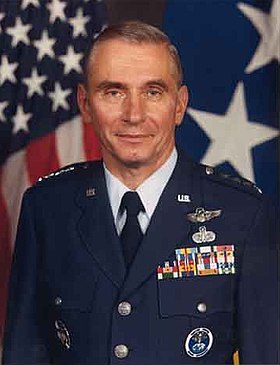
.jpg)
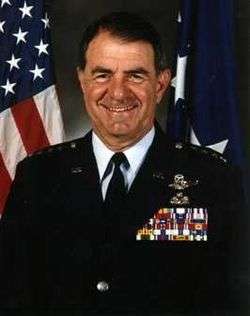
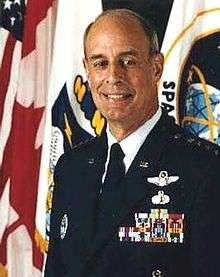
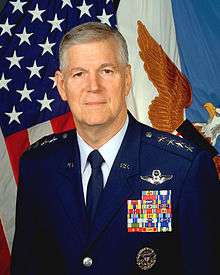
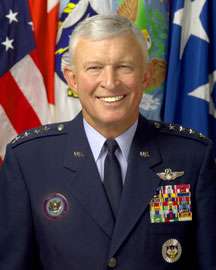

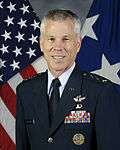
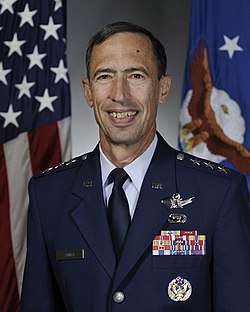
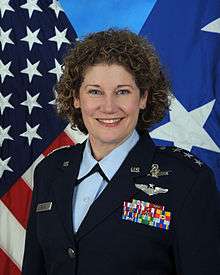
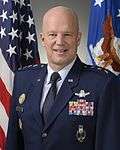
.jpg)
